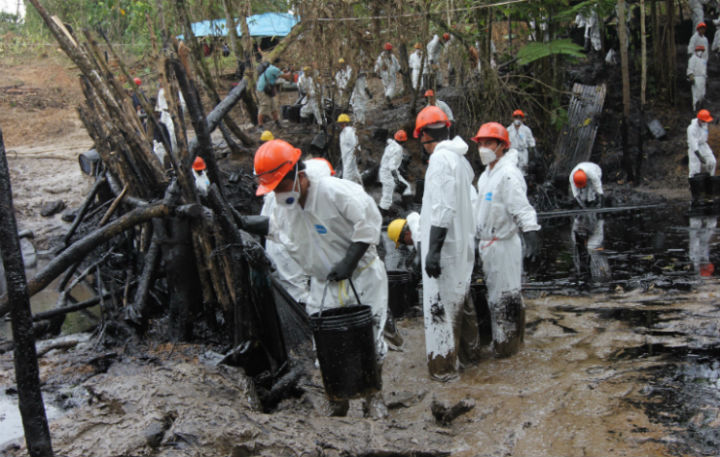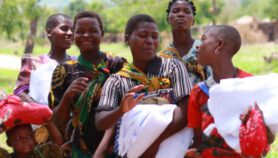By: Barbara Fraser
Send to a friend
The details you provide on this page will not be used to send unsolicited email, and will not be sold to a 3rd party. See privacy policy.
[AMAZONAS/LORETO] More than two months after a pair of devastating oil spills in the Peruvian Amazon, local communities remain unsure about the safety of their water.
While cleanup work continues following the leak of nearly half a million litres of oil from a damaged pipeline into the Chiriaco river in the Amazon and Morona river in Loreto, a region in northern Peru, indigenous people do not know if it is safe to bathe in or drink the water, or eat the fish they catch.
“The fear is not only for people, because of illness, but for the entire food chain,” says biologist Raúl Loayza, who heads the ecotoxicology laboratory at Peru’s Cayetano Heredia University in Lima. “In the long run, there could be a significant effect.”
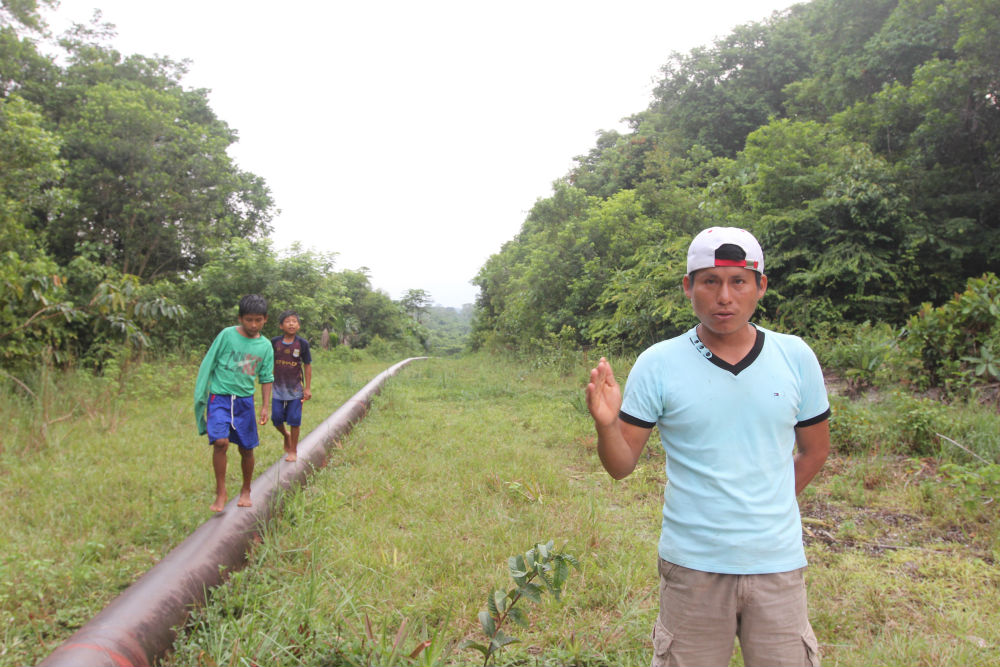
Elías Wasún, president of the Wampis indigenous community of Mayuriaga, stands on the pipeline that carries crude past his village from oil fields in Peru. A spill 13 km on the community's land, fouled a stream where residents and neighboring villages have traditionally fished and hunted.
Barbara Fraser
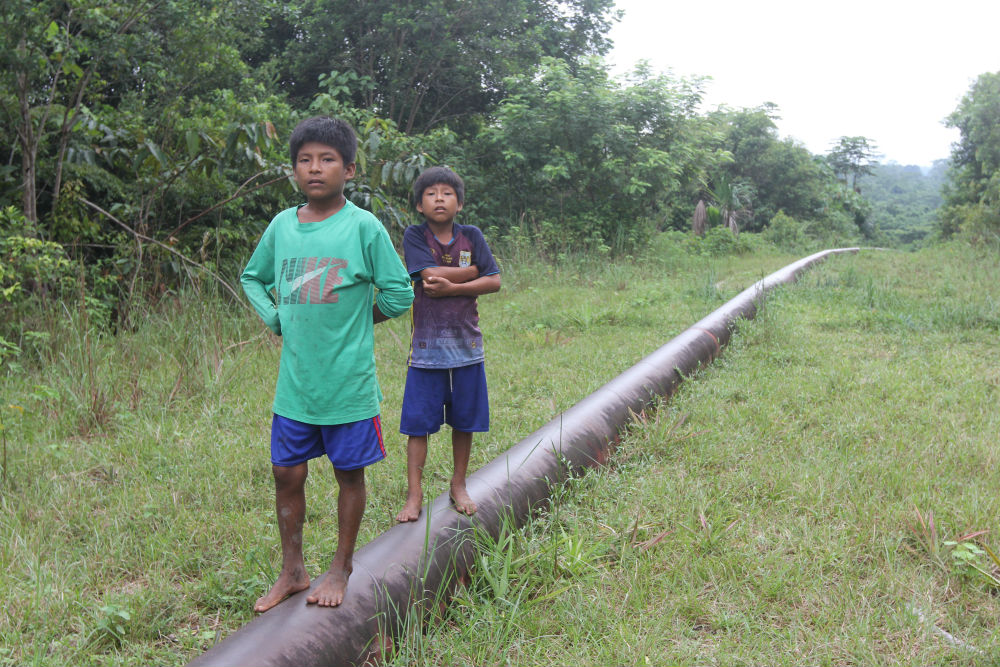


Children walk along a spur of the oil pipeline that carries crude across Peru.. The northern spur passes through the Wampis indigenous community of Mayuriaga, where about 1,000 barrels of oil spilled in early February, fouling land and streams.
Barbara Fraser
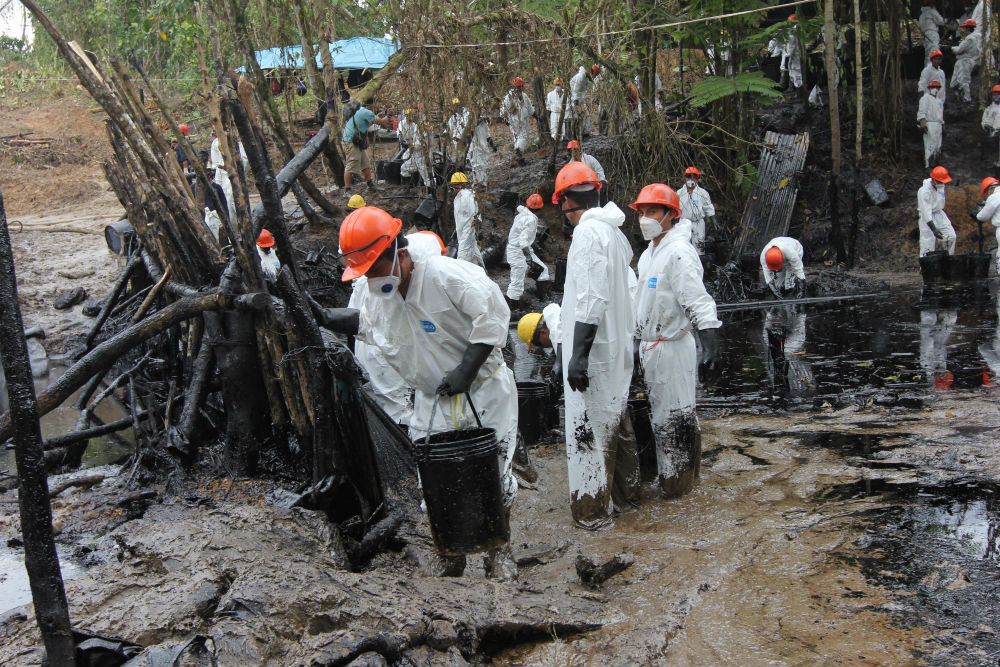


Workers hired from local communities collect some of the estimated 2,000 barrels of oil that spilled into a creek near the northern Peruvian town of Chiriaco in late January. Heavy rains washed some of the oil into the Chiriaco River, a tributary of the Marañón.
Barbara Fraser
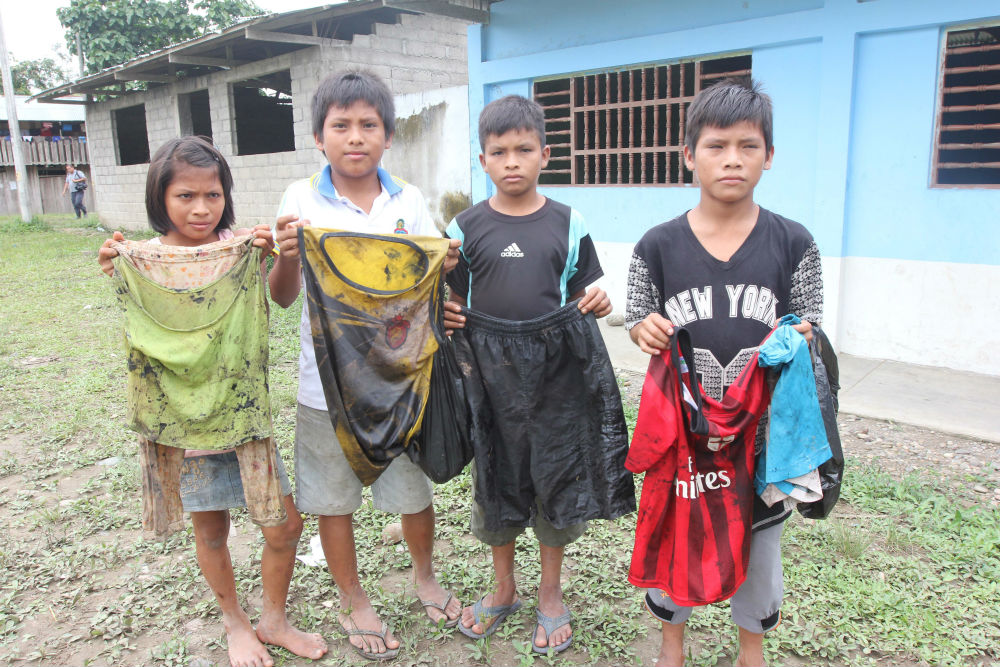


Children in the Awajún indigenous community of Nazareth display the clothes they were wearing when they scooped oil out of the river after a spill from a pipeline operated by Peru's state-run oil company, Petroperú.
Barbara Fraser
In villages along the Chiriaco, many people, including children, were directly exposed to oil that washed downstream from a broken pipe. When maintenance workers dug down to repair the pipe on 25 January, about 2,000 barrels (around 300,000 litres) of crude oil spilled into the river.
When residents saw oil pooling in backwaters, they scooped it up in buckets, tins and bottles, using no protective gear. Petroperú, the state company that runs the pipeline, paid them about US$43 for every barrel of oil recovered.
“The fear is not only for people, because of illness, but for the entire food chain.”
Raúl Loayza, Cayetano Heredia University
Over the next few weeks, many of those who came into contact with contaminated water complained of headaches, nausea, dizziness and skin lesions, local residents told SciDev.Net.
Following the disaster, local and regional health officials pledged to monitor residents’ health, but Loayza warns it could be hard to recognise long-term problems because there is little information about the state of people’s health before the spills.
On 3 February, two people from the Wampis community of Mayuriaga, which is close to the Morona River, were walking along the pipeline some 13 kilometres from their village when they reported seeing oil on the ground and in the trees.
Residents had previously paid little attention to the pipeline running past their houses, says Elías Wasún, the community’s chief.
Stopping the leak, which totalled about 1,000 barrels, took several days, according to Petroperú. Germán Velásquez, president of the board of directors of Petroperú, said the company would remediate the spill sites and leave them in their original condition.
Coming on top of an outbreak of wild rabies that killed eight children in villages farther up the Morona, the second oil spill put pressure on already scant health resources, local healthcare workers say.
SANIPES, the government agency that oversees the health of fisheries, says it is analysing fish samples from the Chiriaco and Morona, but has yet to release any results. Both are tributaries of the Amazon River, and because Amazonian fish migrate long distances and absorb toxins from oil trapped in river sediments, long-term monitoring will be needed, Loayza says.
For families living along the Chiriaco and Morona rivers, uncertainty about the future adds stress, explains Richard Kwok, a researcher at the United States’ National Institute of Environmental Health Sciences. If villagers are worried about their health or livelihoods, that could have a psychological impact even if they were not in direct physical contact with the oil, he says.
Petroperú and government agencies are now distributing food, bottled water and family-size water filters to the communities until there is more clarity about the safety of local food and water sources. But the management of the spills points to the need for communities to receive faster warnings about possible dangers from crude oil, local community leaders say.
David Abramson, whose work at New York University in the United States focuses on how people deal with disaster, says that any plan to warn communities about spills should “begin by understanding what the risk is.”“It may be that the communities don’t know the questions to ask,” he says, “so it’s incumbent upon the companies to introduce better risk messaging.”


